
Busca tu ebook....

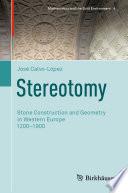
Stereotomy
Autor: José Calvo-lópez
Número de Páginas: 740This book deals with the general concepts in stereotomy and its connection with descriptive geometry, the social background of its practitioners and theoreticians, the general methods and tools of this technology, and the specific procedures for the members built in hewn stone, including arches, squinches, stairs and vaults, ending with a chapter discussing the open problems in this field. Thus, it can be used as a reference book in the subject, but it can also read as a compelling narrative on this subject, one of the main branches of pre-industrial technology. Construction in hewn stone requires the use of geometrical methods and tools to assure that individual stones, either blocks or voussoirs, fit with one another and conform to the general shape of walls, arches or vaults. During the Late Middle Ages and the Renaissance, such techniques and instruments were developed empirically by masons and architects. Later on, learned mathematicians and engineers introduced refinements in these procedures and this branch of knowledge, known as stereotomy, furnished much material to descriptive geometry, a science born with the French Revolution which provided the foundation for...
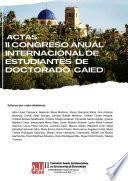
Actas del II Congreso Anual Internacional de Estudiantes de Doctorado de la Universidad Miguel Hernández de Elche (CAIED)
Autor: Alba López Caravaca , Alejandro Moya Martínez , Álvaro Clemente María , Ana Arbaizar Martínez , Carlos Soler Samper , Carmen Botella Martínez , Cristian Torres Vergara , Cristina Soriano Maldonado , Cristina Ortega Giménez , Fernando García Aguilar , Ignacio Babiloni Chust , Inmaculada Meca Sáez , Javier Rubiato Brotons , Laura María Compañ Gabucio , Laura Pérez Cervera , Leontina Lipan , Marcos Adrián Villamarín Ortiz , María Elizabeth Salvador Mira , María Emma García Pastor , María De Los Ángeles Cortés , María Teresa Rodríguez Espinosa , Matías Javier Henríquez Valenzuela , Michel Joe Munya Gachomba , Rocío Martínez Almanza , Rocío Rodríguez Mas , Roger Ortiz Climent , Tatiana Troinina , Domingo Orozco Beltrán , Miguel Ángel Sogorb Sánchez , Josep Xavier Barber
Número de Páginas: 754El manuscrito que se presenta corresponde al libro de resúmenes de las comunicaciones presentadas al segundo congreso internacional anual de estudiantes de doctorado de la Universidad Miguel Hernández de Elche. Dicho congreso se celebró de manera telemática los días 3 y 4 de febrero de 2022. El Congreso estuvo organizado por un comité formado por estudiantes de doctorado de nuestra Universidad en estrecha colaboración con el Vicerrectorado de investigación.

Boletín oficial del estado: Gaceta de Madrid
Autor: Spain
Número de Páginas: 1504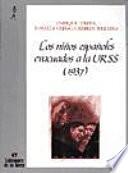
Los niños españoles evacuados a la URSS, (1937)
Autor: Enrique Zafra , Rosalía Crego , Carmen Heredia
Número de Páginas: 248Entre 1808 y 1939, las 'izquierdas' se vieron obligadas a abandonar España en busca de tierras más tolerantes. Aquí se relata una de las más excepcionales evacuaciones: el éxodo de casi 3.000 niños en 1937, acogidos en la antigua U.R.S.S.
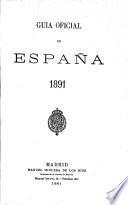
Guía oficial de España
Número de Páginas: 1032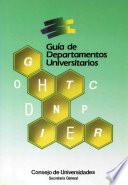
Guía de departamentos universitarios 1989
Número de Páginas: 388Guía que se realiza para dar cumplimiento a la Ley 11/83 de Reforma Universitaria y Decretos que la desarrollan.
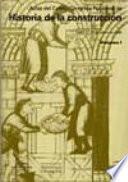
Actas del Cuarto Congreso Nacional de Historia de la Construcción
Autor: Santiago Huerta
Número de Páginas: 270
El Escorial: historia, arte, ciencia y matemáticas
Autor: Antonio Enrique , Javier Bergasa Liberal , Juan Rafael De La Cuadra Blanco , Ana López Mozo , Almudena Pérez De Tudela Gabaldón , Enrique Rabasa Díaz , María Dolores Ruiz López , José María Calama Rodríguez , María Paz Soler Villalobos
Número de Páginas: 522La personalidad del rey Felipe II y su estancia en El Escorial hicieron que se desarrollara en torno a él un período de esplendor en el campo del arte, la ciencia y las matemáticas que reflejaron la forma de vivir del monarca. Este libro recoge el espíritu de El Escorial a lo largo de sus 10 capítulos: El Escorial en cuerpo y alma; Felipe II, el hombre y el rey; La imagen de Felipe II en las artes; El Escorial, estereotomía de la piedra; Génesis de las medidas de El Escorial. Herodoto y la cuestión del codo bíblico; Los aparejadores y las técnicas constructivas empleadas en El Escorial; Las colecciones científicas de Felipe II en El Escorial; Astronomía en la época de Felipe II: modelos teóricos y aplicaciones; Nutrición en el s.XVI, la cocina de Felipe II; Matemáticas áulicas en El Escorial.
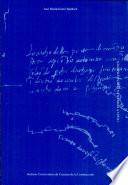
Traza y modelo en el renacimiento
Autor: José María Gentil Baldrich
Número de Páginas: 196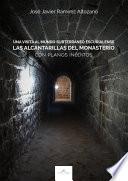
Una Visita al mundo subterráneo escurialense
Autor: José Javier Ramírez Altozano
Número de Páginas: 81Este trabajo comenzó su andadura al disponer de unos planos realizados por el equipo del eminente arquitecto Luis Cervera Vera que representan parte de los sótanos y alcantarillas del monasterio de San Lorenzo de El Escorial. A pesar de su infatigable actividad, frecuentemente dirigida al ámbito escurialense, el insigne académico no publicó dichos planos, ni estudio alguno sobre ellos, lo que me indujo a continuar, de forma casi instintiva, un trabajo presuntamente inacabado. El interés de los mencionados planos es, a mi juicio, innegable. En su momento, cuando se elaboraron, a principios de los años noventa del siglo pasado, no existía, apenas, representación gráfica de los sótanos del monasterio. Esta circunstancia, con el paso del tiempo, ha sido, afortunadamente, superada, lo que sin duda ha restado valor a este aspecto del trabajo de Cervera Vera. No ocurre lo mismo con un elemento tan importante para el adecuado funcionamiento del edificio como son sus alcantarillas. Que yo sepa, hasta la fecha, no ha sido publicado ningún plano de ellas, lo que me ha parecido motivo suficiente para acometer este trabajo.
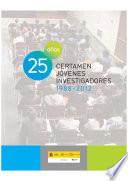
25 años. Certamen jóvenes investigadores 1988 - 2012
Número de Páginas: 409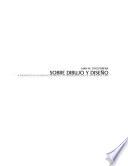
Sobre Dibujo y Diseño
Autor: Juan M. Otxotorena
Número de Páginas: 172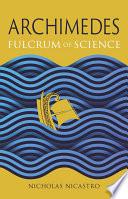
Archimedes
Autor: Nicholas Nicastro
Número de Páginas: 192A bold reimagining of the Greek mathematician’s singular life as a truly modern scientist. Galileo, Leonardo, Newton, and Tesla revered him: Archimedes of Syracuse—an engineer who single-handedly defied the world’s most powerful army and a mathematician who knew more in 212 BCE than all of Europe would know for the next seventeen centuries. In this bold reimagining, modern polymath Nicholas Nicastro shines a new light on Archimedes’ life and work. Far from the aloof, physically inept figure of historical myth, Archimedes is revealed to be an ambitious, combative, and fiercely competitive man. A genius who challenged an empire, Archimedes emerges in this book as the world’s first fully modern scientist—millennia before his intellectual descendants transformed our world.

Cuando la Torre Eiffel era roja y las vacas cuadradas
Autor: Fernando Siles
Número de Páginas: 194El arte es un maravilloso reflejo de lo que fuimos, somos y seremos. El patrimonio artístico constituye la mayor mina de oro de la historia de la humanidad, pero muchos de sus brillantes secretos aún están por descubrir. Fernando Siles el conocido @Itineratur en Twitter, cuyos megahilos enganchan a miles de personas traza en este libro un ameno y divertido recorrido por el espacio y el tiempo que nos lleva a algunas de las creaciones más locas de la historia del arte. En estas páginas encontrarás menhires flotantes, una mini Notre Dame en los Pirineos, el mueble más deseado o una sorprendente Torre Eiffel de color rojo.
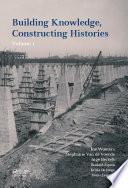
Building Knowledge, Constructing Histories, Volume 1
Autor: Ine Wouters , Stephanie Van De Voorde , Inge Bertels , Bernard Espion , Krista De Jonge , Denis Zastavni
Número de Páginas: 941Building Knowledge, Constructing Histories brings together the papers presented at the Sixth International Congress on Construction History (6ICCH, Brussels, Belgium, 9-13 July 2018). The contributions present the latest research in the field of construction history, covering themes such as: - Building actors - Building materials - The process of building - Structural theory and analysis - Building services and techniques - Socio-cultural aspects - Knowledge transfer - The discipline of Construction History The papers cover various types of buildings and structures, from ancient times to the 21st century, from all over the world. In addition, thematic papers address specific themes and highlight new directions in construction history research, fostering transnational and interdisciplinary collaboration. Building Knowledge, Constructing Histories is a must-have for academics, scientists, building conservators, architects, historians, engineers, designers, contractors and other professionals involved or interested in the field of construction history. This is volume 1 of the book set.
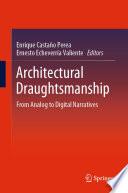
Architectural Draughtsmanship
Autor: Enrique Castaño Perea , Ernesto Echeverria Valiente
Número de Páginas: 1714This is the proceedings of the XVI International Congress of Graphic Design in Architecture, EGA 2016, held in Alcalá de Henares, Spain, in June 2016. About 200 professionals and researchers from 18 different countries attended the Congress. This book will be of interest to researchers in the field of architecture and Engineering. Topics discussed are Innovations in Architecture, graphic design and architecture, history and heritage among others.
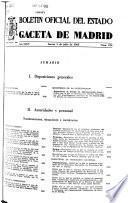
Boletâin oficial del estado: Gaceta de Madrid
Autor: Spain
Número de Páginas: 1662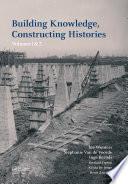
Building Knowledge, Constructing Histories
Autor: Ine Wouters , Stephanie Van De Voorde , Inge Bertels , Bernard Espion , Krista De Jonge , Denis Zastavni
Número de Páginas: 1914Building Knowledge, Constructing Histories brings together the papers presented at the Sixth International Congress on Construction History (6ICCH, Brussels, Belgium, 9-13 July 2018). The contributions present the latest research in the field of construction history, covering themes such as: - Building actors - Building materials - The process of building - Structural theory and analysis - Building services and techniques - Socio-cultural aspects - Knowledge transfer - The discipline of Construction History The papers cover various types of buildings and structures, from ancient times to the 21st century, from all over the world. In addition, thematic papers address specific themes and highlight new directions in construction history research, fostering transnational and interdisciplinary collaboration. Building Knowledge, Constructing Histories is a must-have for academics, scientists, building conservators, architects, historians, engineers, designers, contractors and other professionals involved or interested in the field of construction history.
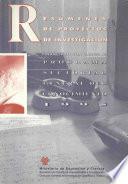
Resúmenes de proyectos de investigación financiados con cargo al programa sectorial general del conocimiento. Año 1995
Autor: Ministerio De Educación
Número de Páginas: 558Informe sobre los proyectos financiados por el Plan Nacional de Investigación Científica y Desarrollo Tecnológico.
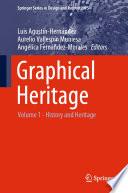
Graphical Heritage
Autor: Luis Agustín-hernández , Aurelio Vallespín Muniesa , Angélica Fernández-morales
Número de Páginas: 791This book presents the proceedings of the 18th International Conference on Graphic Design in Architecture, EGA 2020, focusing on heritage – including architectural and graphic heritage as well as the graphics of heritage. This first volume gathers selected contributions covering theories, and new technologies and findings to help shed light on current questions related to heritage. It features original documentation studies on historical archives, 3D and solid representation of architectural objects, as well as virtual graphic representation and applications of augmented reality, all documenting and/or reconstructing the present, past and future of architectural objects. As such, this book offers extensive and timely information to architectural and graphic designers, urban designers and engineers, and industrial designers and historians.
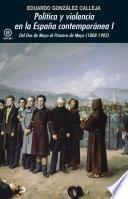
Política y Violencia en la España Contemporánea I
Autor: Eduardo González Calleja
Número de Páginas: 400Las dificultades para el establecimiento de estructuras sociales, políticas e institucionales estables en España a lo largo del siglo XIX han tenido estrecha relación con la violencia que caracterizó al proceso revolucionario liberal en sus diversas etapas. La presente obra destaca los aspectos de orden político, social, económico y cultural que contribuyeron a la plasmación y al desarrollo de los diversos repertorios y arquetipos violentos, mostrando su origen, su justificación ideológica, sus componentes estratégicos, sus resultados prácticos y su difusión en el espacio y en el tiempo. También presta atención a los dispositivos (militares, milicianos, policiales, gubernativos, judiciales, legislativos…) de defensa del Estado, en su mutua interacción con los grupos que desafían su autoridad. Por último, aborda un análisis en términos comparativos con otros países de la Europa latina, como Portugal, Francia e Italia, sin olvidar el mundo colonial —especialmente el antillano— y otros espacios geopolíticos que tuvieron su incidencia en coyunturas más concretas. Con ello se trataría de aclarar que, lejos de tratarse de una singularidad española, la...

Gaceta de Madrid
Número de Páginas: 1518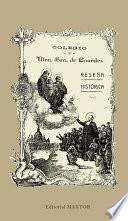
COLEGIO DE NUESTRA SEÑORA DE LOURDES. RESEÑA HISTORICA
Número de Páginas: 193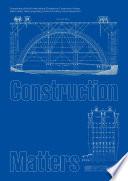
Construction Matters
Autor: Stefan Holzer , Silke Langenberg , Clemens Knobling , Orkun Kasap
Número de Páginas: 1281Construction History, Construction Heritage, Recent Construction, Historiography, Industrialization, Engineering Sciences, Building Materials, Building Actors Construction History is still a fairly new and small but quickly evolving field. The current trends in Construction History are well reflected in the papers of the present conference. Construction History has strong roots in the historiography of the 19th century and the evolution of industrialization, but the focus of our research field has meanwhile shifted notably to include more recent and also more distant histories as well. This is reflected in these conference proceedings, where 65 out of 148 contributed papers deal with the built heritage or building actors of the 20th or 21st century. The conference also mirrors the wide spectrum of documentary and analytical approaches comprised within the discipline of Construction History. Papers dealing with the technical and functional analysis of specific buildings or building types are complemented by other studies focusing on the lives and formation of building actors, from laborers to architects and engineers, from economical aspects to social and political implications, on ...
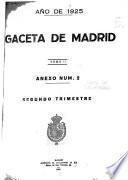
Gaceta de la Regencia de España e Indias
Número de Páginas: 1576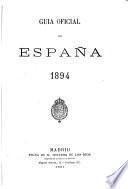
Calendario manual y guía de forasteros en Madrid
Número de Páginas: 1020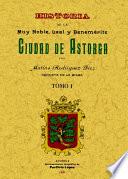
Historia de la muy noble, leal y benemérita ciudad de Astorga
Autor: Matías Rodríguez Díez
Número de Páginas: 957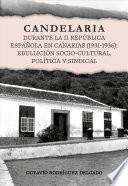
Candelaria durante la II República española en Canarias (1931-1936): ebullición socio-cultural, política y sindical
Autor: Octavio Rodríguez Delgado
Número de Páginas: 289Este libro está dedicado a la ebullición socio cultural, deportiva, política y sindical del municipio de Candelaria durante la II República, que alcanzó un punto culminante no vivido hasta entonces, pues a lo largo de tan solo cinco años (1931-1936) se fueron constituyendo diversas agrupaciones políticas y una federación obrera, así como sociedades recreativas, cines, agrupaciones musicales y clubes deportivos, que se sumaron a las ya existentes, tanto en la cabecera de este municipio, como en los importantes pagos de Igueste y Barranco Hondo, en algunos casos con jurisdicción sobre todo el término y en otros con ámbito restringido a dichos núcleos. Pero esa impresionante inquietud y movimiento ciudadano acabó de forma brusca con el golpe de estado que inició la Guerra Civil, con la clausura de todas las consideradas progresistas, la incautación de sus bienes y la represión sobre todos los vecinos considerados de izquierdas y opuestos al Movimiento.
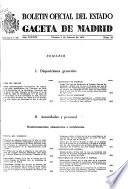
Boletín oficial del estado
Autor: Spain
Número de Páginas: 1050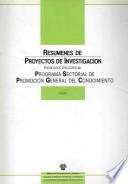
Resúmenes de proyectos de investigación
Número de Páginas: 426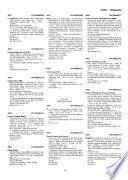
Bibliografía española
Número de Páginas: 804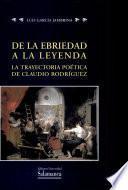
De la ebriedad a la leyenda. La trayectoria poética de Claudio Rodríguez
Autor: Luis García Jambrina
Número de Páginas: 204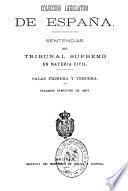
Sentencias del Tribunal Supremo en materia civil
Autor: Spain. Tribunal Supremo
Número de Páginas: 1156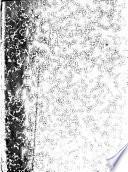
Gazeta de Madrid baxo el Gobierno de la Regencia
Número de Páginas: 1696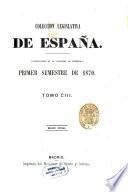
Colección legislativa de España
Número de Páginas: 1528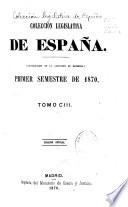
Coleccion de las leyes, decretos y declaraciones de las Cortes
Número de Páginas: 1522Opciones de Descarga
Últimos libros y autores buscados
Libros reeditados
- Tarot Genealógico - Víctor Leni Cordero
- Muerte En El Agua - R. W. K. Clark
- Comentario Bíblico Con Aplicación NVI Romanos - Douglas J. Moo
- El Náhuatl Y El Español De México - Lukas Szpeth
- Péndulo De Arena - Carlos Fajardo Fajardo
- Conversaciones Sobre Música - Wilhelm Furtwängler
- GUGL - Alejandra Juárez D´Aquino
- Valoración De La Condición Física De La Población Escolar Mediante La Batería Eurofit - Gonzalo Cuadrado Sáenz
- Historias Entrelazas - Sebastián Rivera Mir
- La Web Social Como Nuevo Medio De Comunicación Y Evaluación Científica - Amalia Mas Bleda